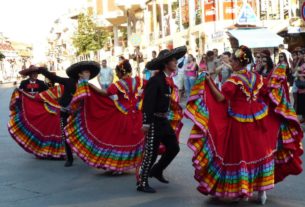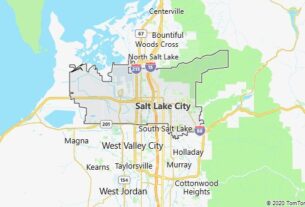Nye County, situated in the southwestern part of the state of Nevada, is a vast and diverse region known for its rugged desert landscapes, towering mountain ranges, and rich mineral resources. From the desolate expanses of the Mojave Desert to the pristine waters of its lakes and rivers, Nye County offers a unique blend of natural beauty and rugged wilderness.
Location and Boundaries Nye County is the largest county in Nevada by area, covering a vast expanse of land in the central and southwestern parts of the state. It is bordered by several other counties, including Esmeralda and Lincoln to the north, White Pine to the northeast, Clark to the southeast, and Inyo and San Bernardino in California to the west. The county’s southern boundary extends to the border with the state of California. Check Aristmarketing.com to learn more.
Topography The topography of Nye County is characterized by a diverse range of landscapes, including deserts, mountains, valleys, and basins. The county is home to several mountain ranges, including the Spring Mountains to the southeast, the Toiyabe Range to the northeast, and the Nellis Range to the northwest. These mountain ranges feature rugged terrain and towering peaks, with elevations reaching over 10,000 feet in some areas.
In addition to its mountainous terrain, Nye County is also home to vast desert basins, including parts of the Mojave Desert to the south and the Great Basin Desert to the north. These desolate landscapes are punctuated by dry lake beds, salt flats, and sand dunes, creating a stark and otherworldly environment.
Climate Nye County experiences a desert climate, characterized by hot, arid summers and mild, dry winters. The region receives minimal precipitation, with most of it falling during the winter months in the form of rain or occasional snow. Average temperatures range from around 40°F (4.4°C) in January to over 100°F (37.8°C) in July, with wide temperature variations between day and night.
Due to its varied topography and elevation, the climate in Nye County can vary significantly from one area to another. Higher elevations in the mountain ranges experience cooler temperatures and more precipitation, while lower elevations in the desert basins are hotter and drier.
Population As of the 2020 United States Census, Nye County had a population of approximately 48,000 people. The county’s population is spread out across its vast expanse, with several communities and towns serving as hubs for residents and visitors. The largest town in the county is Pahrump, located in the southern part of the county. Other significant communities include Tonopah, Beatty, Amargosa Valley, and Gabbs.
Natural Resources Nye County is rich in natural resources, including minerals, water, and scenic landscapes. The county is known for its extensive mineral deposits, including gold, silver, copper, and lithium. Mining has been a significant industry in the region for over a century, contributing to the county’s economy and shaping its history.
In addition to its mineral resources, Nye County is also home to diverse ecosystems and wildlife habitats. The region’s mountains, valleys, and desert basins support a variety of plant and animal species, including desert bighorn sheep, mule deer, coyotes, and numerous bird species.
Rivers and Lakes Despite its arid climate, Nye County is home to several rivers, streams, and lakes, which play a vital role in the region’s ecosystem and provide water for wildlife, agriculture, and recreation. The most prominent river in the county is the Amargosa River, which flows through the southern part of the county before eventually dissipating into the desert.
Nye County is also home to several natural and man-made lakes, including the Ash Meadows National Wildlife Refuge, which contains several spring-fed wetlands and ponds that provide habitat for endangered species such as the Amargosa pupfish and the Ash Meadows speckled dace.
Land Use Land use in Nye County is diverse, reflecting its varied geography and natural resources. The county’s vast desert landscapes are primarily used for mining, grazing, and outdoor recreation. Mining operations, including gold and silver mines, are scattered throughout the region, contributing to the county’s economy and providing employment opportunities for residents.
In addition to mining, agriculture is also an important industry in Nye County, particularly in the southern part of the county around the town of Pahrump. Irrigated farming, including alfalfa, hay, and vegetables, is common in the region, supported by water from underground aquifers and surface water sources.
Outdoor recreation is another significant land use in Nye County, with numerous opportunities for hiking, camping, off-roading, and wildlife viewing in its desert landscapes and mountain ranges. The county is also home to several state parks, national wildlife refuges, and conservation areas, which protect and preserve its natural and cultural heritage.
Conservation and Environmental Protection Nye County places a strong emphasis on conservation and environmental protection to preserve its natural resources and wildlife habitats. The county government, in collaboration with state and federal agencies, implements policies and programs aimed at protecting sensitive ecosystems, promoting sustainable land use practices, and minimizing the impact of mining and other industrial activities on the environment.
Efforts are also underway to address water conservation and management issues, particularly in the face of increasing demands for water from growing populations and expanding industries. The county works to balance the needs of its residents and businesses with the preservation of its natural resources and scenic landscapes for future generations.
Conclusion Nye County, Nevada, is a vast and diverse region characterized by its rugged desert landscapes, towering mountain ranges, and rich mineral resources. From its expansive deserts to its pristine lakes and rivers, the county offers a unique blend of natural beauty and recreational opportunities. By stewarding its resources responsibly and implementing conservation measures, Nye County strives to maintain its unique natural heritage and ensure a sustainable future for its residents and visitors.


